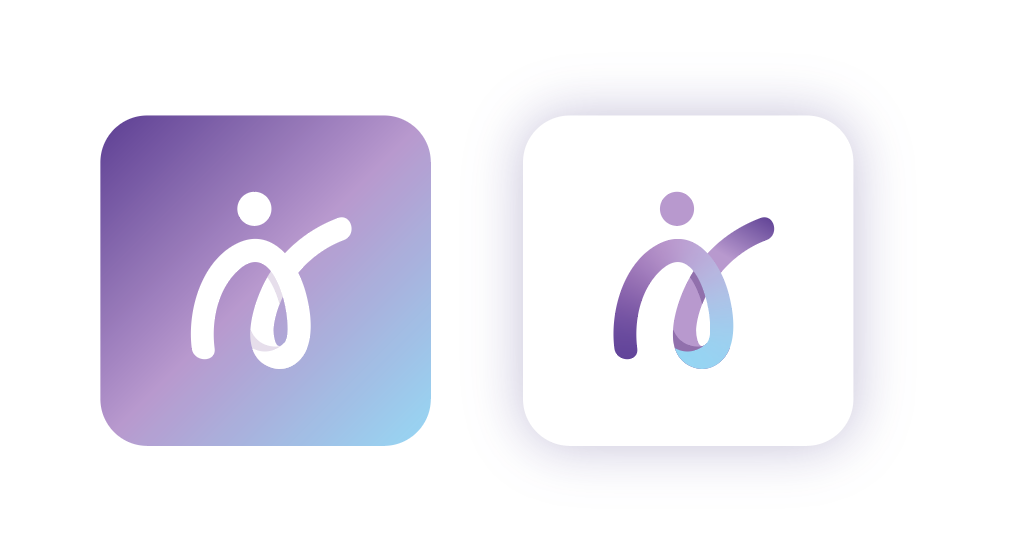
Movement improves life
Loïc Gambardella, our CEO, is passionate about the human body. He started to practice many sports disciplines from an early age, and quickly realized that underneath very different techniques lies one truth: movement.
In his desire to understand the mechanics of the human being, Loïc first studied physiotherapy, osteopathy and physical preparation. Since then, he has continued to train and innovate to develop movement optimization protocols dedicated to healthy and sustainable sports performance.
A knowledge he now wishes to share, with the hopes of helping as many people as possible. Because repetitive positions at work can seriously harm our health and productivity, Loic likes to say that we are “daily life athletes”.
With his team, he created neomove, a mobile application which provides its users with the unique opportunity to regain healthy movements and better health.
What is movement?
Movement is at the heart of our development as a human being.
It allows us to discover the world. It feeds our brain with information captured by our sensors, every time we practice a sport or any kind of physical activity. Healthy movements rely on a diversity of movement abilities that vary on interrelated scales such as:
Gross Motor: This is large-scale movement that involves the use of large muscle groups, such as walking, running, jumping, and climbing.
Fine Motor: These are small-scale movements that involve the use of small muscle groups, such as typing, writing, and using utensils.
Axial Movement: This is movement that occurs around the central axis of the body, such as bending, twisting and rotation.
Planar motion: This is motion that occurs in a plane, such as flexion and extension, abduction and adduction, and rotation.
Joint Movement: This is movement that occurs at a joint, such as flexion, extension, abduction, adduction, rotation, and circumduction.
“Without movement, there is no life”
At birth, the first muscles to activate are the anterior muscles. Positioned at the front of our body, they initiate our fetal position, closed to the world.
Coming next, visual stimulation will, little by little, make us raise our heads and lead us to discover the world. Then will come the learning of crawling, quadrupedal walking, the sitting position, and the standing position. Some of us may follow these stages in this exact order, some of us may skip some stages, or even go backwards and forwards.
What we know for sure is that during these stages, the muscles of our posterior chain, positioned at the back of our body, will activate and develop, allowing us to maintain our upward postures.
Lack of movement is an invisible and permanent danger.
We are build with a natural imbalance:
2/3 of our muscular forces lead us forward (anterior and closing)
1/3 of our muscular forces lead us backward (posterior and opening)
This imbalance, which poses no problem when we are fully mobile, becomes pathological in our modern and static societies. As you will have understood, almost all of our activities take place in front of us, in the anterior plane, and most often in a seated position...
Add to this the fact that our muscle chains weaken from the age of 27, and you quickly realize that the risk of a worsening imbalance is inevitable, with well-known consequences such as lasting pain and injury.

The basics of movement
Before going any further, lest’s review movement’s simple equation:
HEALTHY MOVEMENT = MOBILITY x STABILITY x CONTROL
Mobility
Activation of joint areas where the major movement is in rotation (shoulder, hip, wrist, etc.), via muscle groups activating a movement function.
Stability
Activation of joint areas where the major movement is not rotation (knees, lumbar, etc.) through muscle groups which, in harmonious contraction, make it possible to create a point of support facilitating the effective execution of the movement .
Motor schemes (control)
The motor schemes of the human body are a set of neural patterns that control movement. These patterns are stored in the brain and are activated when we perform specific movements. Motor patterns are essential for coordinated and efficient movement.
There are two main types of motor schemes:
Open-loop motor schemes: they are used for movements that do not require feedback from the environment. For example, when we throw a ball, we use an open-loop motor pattern to control the movement of our arm. We don't need to see the ball to throw it accurately.
Closed-loop motor schemes: they are used for movements that require feedback from the environment. For example, when we walk, we use a closed-loop motor pattern to control the movement of our legs. We need to see the ground to adjust our steps and avoid tripping.
Motor schemes are constantly updated and refined as we learn new moves and gain experience. This is why we become more coordinated and efficient in the movements as we practice them.
Here’s what can be remembered about motor schemes:
They are stored in the brain.
They are activated when we perform specific movements.
They are essential for coordinated and efficient movement.
There are two main types of motor schemes: open loop and closed loop.
When in movement, motor schemes are constantly updated and refined.
The benefits of movement
Movement is essential for our physical health. It helps keep our joints lubricated, our bones strong and our muscles toned. It also helps improve our circulation, which can help reduce our risk of heart disease, stroke, and other chronic health conditions.
Here are some specific examples of how movement can benefit our health:
Physical health: Movement helps maintain a healthy weight, reduce the risk of obesity and improve cardiovascular health. It may also help prevent or manage chronic diseases such as diabetes, heart disease, and stroke.
Mental health: Movement can help reduce stress, anxiety and depression. It can also improve mood, increase energy levels and help us sleep better.
Cognitive health: Movement helps improve memory, concentration and problem-solving skills. It may also help protect us from age-related cognitive decline.
Please listen to neuroscientist Wendy Suzuki explain all about the benefits of exercise in this fascinating TED talk.

What about posture?
We often read about posture, but very little about movement. It is a mistake.
Posture and movement are often thought as two separate entities, but they are actually very interconnected. Posture is the body's position in space, while movement is the change of that position.
Good posture is essential for efficient movement. When we have good posture, our muscles can work together more efficiently and we are less likely to experience pain or injury. Conversely, poor posture can lead to inefficient movement, muscle imbalances, and pain.
MOVEMENT = AN INITIAL POSTURE + SEGMENTS IN ACTION + A FINAL POSTURE
Posture is a state of balance in which external forces and constraints (gravity, sport, specific position) are absorbed harmoniously: the muscular system is in tension balance, and ready to activate effectively.
The posture is never static, we produce micro-movements – for many imperceptible – all day long.
Try to stand, or even sit, without moving, you will not succeed.
These micro-movements are produced by our muscular system, which seeks to maintain a balanced posture, a posture that does not damage the body.
One cannot improve posture without improving movement.
There are a number of factors that can affect posture and movement, including:
Muscular strength and flexibility: Strong and flexible muscles are better able to maintain good posture and support movement.
Body awareness: Body awareness is the ability to sense and feel the position of our body in space. This is important for maintaining good posture and preventing injury.
Function of the nervous system: The nervous system plays a key role in controlling posture and movement. When the nervous system is not functioning properly, it can lead to posture and movement problems.
Pain: Pain can also affect posture and movement. When we are in pain, we may tend to avoid certain movements or hold our body in a certain way in order to minimize the pain. This can lead to long-term posture and movement problems.
Repetitive position: Repetitive positions contribute to pain and injury.
Repetitive positions are movement’s worst ennemy
Our basic movements, on which all our gestures are based, develop from 0 to 3 years old. During this period our neurological system follows different stages of evolution, and progresses zone by zone, from the center of the body, towards the extremities.
At 3 years old, and apart from any particular situation (handicap, accident...), we can consider that our movement strategies have reached their maximum efficiency.
Problem is, in most occidental countries, after this age we start going to school, and the sitting position makes its entry in our lives.
Our bodies require movement.
When we maintain the same position for an extended period of time, our muscles get tired and our joints become stressed. This can lead to pain, inflammation and muscle imbalances. These imbalances, which we call compensations, will force our brain to modify its motor schemes.
Motor schemes alteration means that your brain will:
Start looking for alternative, but less effective resources, creating new imbalances or reinforcing the existing ones.
Preserve the areas of tension (or pain), leading you to reduce your movements and therefore creating a vicious circle of kinesiophobia.
Here’s a list of repetitive positions from our everyday lives:
Sitting at a desk for long periods.
This can lead to neck, shoulder and back pain.
Standing for long periods.
This can lead to lower back pain, knee pain, and hip pain.
Using a computer mouse for long periods of time.
This can lead to wrist, hand and forearm pain.
Texting or using a smartphone for long periods of time.
This can lead to neck, shoulder and wrist pain, especially if your phone is heavy.
Driving for long periods.
This can lead to neck, shoulder and back pain.
Here’s an example of a compensation mechanism:
Our thoracic zone is an area designed to perform rotations (turn right or left).
When we sit, our posterior muscles (that keep our back straight), sag, and our body rolls inwards. Under that inward pressure, our thoracic area stiffens.
This ideal zone of rotation can no longer be used, our brain modifies its motor scheme and asks the lower cervical zone and the lumbar zone to do all the work.
These two areas, which are not intended for rotation in major movements – but rather for flexion and extension –, will deteriorate, causing pain or herniated discs.
Movement and musculoskeletal disorders
Musculoskeletal disorders (MSDs) are conditions that affect the muscles, tendons and joints. They can be caused by a professional activity that requires repetitive gestures, static work, excessive efforts, extreme joint positions or the carrying of heavy loads. Psychosocial factors, such as time pressure, lack of autonomy, lack of social support and monotonous work, can also contribute to the development of MSDs.
MSDs can affect any part of the body, but they are most common in the upper limbs (shoulders, elbows, hands, wrists and fingers) and lower back.
Symptoms of MSDs can include pain, stiffness, numbness, tingling, tingling, difficulty moving, and poor coordination. In some cases, MSDs can be serious and lead to significant functional limitations. They can also have a negative impact on the quality of life of those who suffer from them.

Neomove: your way back to a balanced movement
Being active is important.
Sitting all day at work without practicing any physical activity or sport will lead to pain, stiffness, tiredness, muscle weakness and motivation loss.
Recreating movement is essential.
Repetitive positions lead to modified motor schemes, compensations, pain and injuries. Modified motor schemes do not switch back to their normal function as soon as we leave work or practice a sport.
They needs to be relearned.
Neomove can help you move better and prevent pain.
Recreating movement means reteaching your brain how to use your body in a healthy way.
Movement has become a public health priority in France.
Neomove is a body awareness and movement application that teaches you how to move with efficiency.
The neomove rituals will guide you through the 4 stages of relearning:
You are unaware of your inefficiency (movement deficit)
You perform the move test, and become aware of your limits
During your dedicated rituals, you relearn how to move with awareness (concentrated movement practice)
You integrate these new skills in an unconscious and automated way, and apply them in all your daily actions with efficiency.
With regular neomove practice, you can:
Limit your risk of compensation
Improve your postural capacities
Reduce your risk of pain and injuries (MSDs)
Increase your self-confidence
Feel confident about taking on new personal and professional challenges




